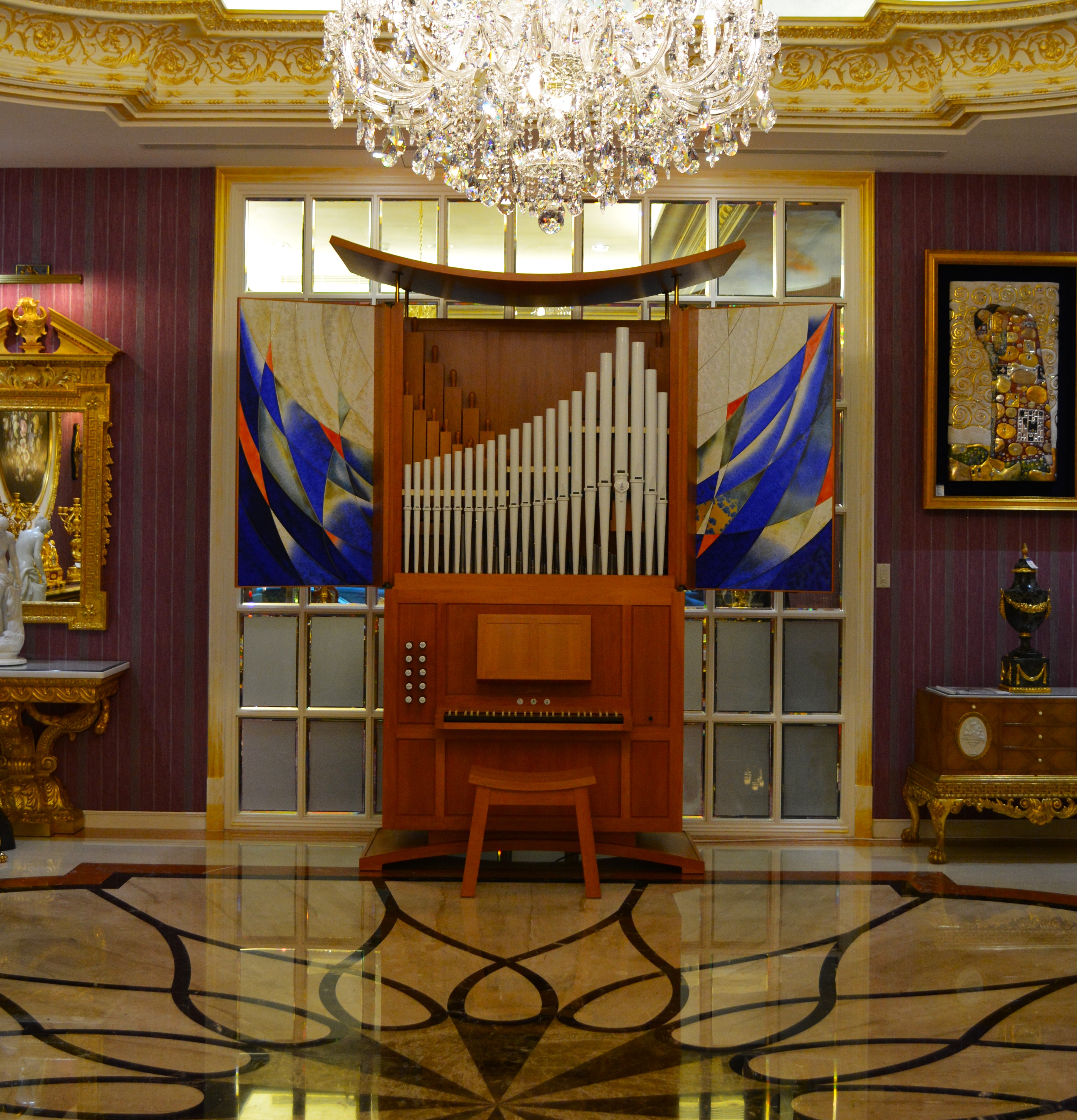Taipeh, 國裕生活股份有限公司, Positive with Meissen porcelain pipes
| Builder | Jehmlich Orgelbau Dresden |
|---|---|
| Year | ca. 2015 |
| Period/Style | Neo-Baroque |
| Stops | 5 |
| Keyboards | 1 |
| Keyaction | tracker/mechanical |
| Tuning | Equal at 440 Hz |
The porcelain artist, Ludwig Zepner, who served as the longtime head of artistic development at the Meissen Manufactory, discovered fragments of porcelain organ pipes in the attic of the manufactory in 1950. These are remnants of unsuccessful efforts by Kaendler in collaboration with organ builder Johann Ernst Hähnel around 1730, and around 1920 by modeler Börner.
Around 1910, the Ocarina factory of Freyer & Son in Meissen acquired a patent for the production of organ pipes from porcelain. A positive from this company is housed in the Museum of Musical Instruments at the University of Leipzig. It features a complete register with porcelain pipes.
In the year 2000, there was another successful attempt to produce porcelain pipes for the organ. The high art of porcelain processing was further developed by Ludwig Zepner for pipe production, making it possible to create a suitable ceramic form for the pipe, control the shrinkage of the porcelain mass during drying and firing, and avoid possible deformation during firing. Through collaboration between the Meissen Porcelain Manufactory and Jehmlich Orgelbau Dresden, the acoustic requirements of the sound body and the technological properties of the porcelain material were harmonized in the production of the pipes.
Around 1910, the Ocarina factory of Freyer & Son in Meissen acquired a patent for the production of organ pipes from porcelain. A positive from this company is housed in the Museum of Musical Instruments at the University of Leipzig. It features a complete register with porcelain pipes.
In the year 2000, there was another successful attempt to produce porcelain pipes for the organ. The high art of porcelain processing was further developed by Ludwig Zepner for pipe production, making it possible to create a suitable ceramic form for the pipe, control the shrinkage of the porcelain mass during drying and firing, and avoid possible deformation during firing. Through collaboration between the Meissen Porcelain Manufactory and Jehmlich Orgelbau Dresden, the acoustic requirements of the sound body and the technological properties of the porcelain material were harmonized in the production of the pipes.
| Manual |
|---|
| Porzellanflöte 8' |
| Gedackt 8' |
| Rohrflöte 4' |
| Waldflöte 2' |
| Quinte 1 ⅓' |
No Video/Audio samples available.
https://organindex.de/index.php?title=Taipeh_(Taiwan),_Opulent_State_Life_Corporation,_Orgelpositiv_mit_Mei%C3%9Fner_Porzellanpfeifen
 Pipe Organ Map
Pipe Organ Map